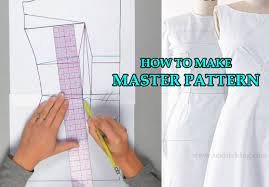Free Plastic Moulding Assistant Course (4Months)
Plastic Moulding Assistant/Helper click here
Brief Job Description
Moulding Helper will be involved in cutting the plastic moulding as per the desired shapes, supporting the operator moulding operations and storing the output at the designated place.
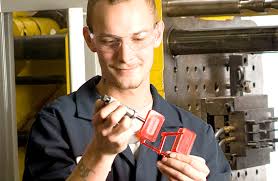
Personal Attributes
Reading, writing and communication skills, quality consciousness, safety orientation, Dexterity, Physique to sustain strenuous conditions, Ability to use fingers, hands and feet with ease to complete the assigned task (Dexterity), high precision and sensitivity towards safety for self and equipment.


Maintain a safe and healthy working environment:
Elements and Performance Criteria
Identify and report the risks identified
To be competent, the user/individual on the job must be able to:
PC1.. Identify activities which can cause potential injury through sharp objects, burns, fall, electricity, gas leakages, radiation, poisonous fumes, chemicals ,loud noise
PC2. Inform the concerned authorities about the potential risks identified in the processes, workplace area/ layout, materials used etc
PC3. Inform the concerned authorities about machine breakdowns, damages which can potentially harm man/ machine during operations
PC4. Create awareness amongst other by sharing information on the identified risks
Create and sustain a Safe, clean and environment friendly work place
To be competent, the user/individual on the job must be able to:
PC5.. Follow the instructions given on the equipment manual describing the operating process of the equipments
PC6.. Follow the Safety, Health and Environment related practices developed by the organization
PC7. Operate the machine using the recommended Personal Protective Equipments (PPE)
PC8. . Maintain a clean and safe working environment near the work place and ensure there is no spillage of chemicals, production waste, oil, solvents etc
PC9. Maintain high standards of personal hygiene at the work place
PC10. Ensure that the waste disposal is done in the designated area and manner as per organization SOP.
PC11. Inform appropriately the medical officer/ HR in case of self or an employees illness of contagious nature so that preventive actions can be planned for others
Knowledge and Understanding (KU)
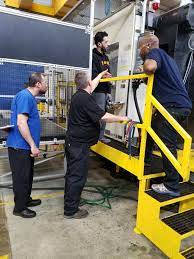
The individual on the job needs to know and understand:
KU1. relevant standards, procedures and policies related to Health, Safety and Environment followed in the company
KU2. basic knowledge of Safety procedures( fire fighting, first aid) within the organization
KU3. knowledge of various types of PPEs and their usage
KU4. basic knowledge of risks/hazards associated with each occupation in the organization
KU5. how to safely operate various tools and machines and risksassociated with the tools/ equipment
KU6. knowledge of personal hygiene and how an individual an contribute towards creating a highly safe and clean working environment
Generic Skills (GS)
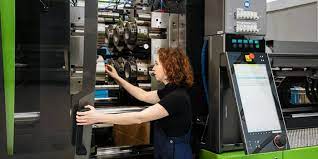
User/individual on the job needs to know how to:
GS1. write basic level notes and observations
GS2. read safety instructions put up across the plant premises
GS3. read safety precautions mentioned in equipment manuals and panels to understand the potential risks associated
GS4. effectively communicate information to team members
GS5. informemployees in the plant and concerned functions about events, incidents & potential risks observed related to Safety, Health and Environment.
GS6. question operator/ supervisor in order to understand the safety related issues
GS7. attentively listen with full attention and comprehend the information given by the speaker during safety drills and training programs
GS8. use common sense and make judgments during day to day basis
GS9. use reasoning skills to identify and resolve basic problems
GS10. use common sense and make judgments during day to day basis
GS11. use reasoning skills to identify and resolve basic problems
Maintain 5S at the work premises:
Elements and Performance Criteria
Ensure sorting
To be competent, the user/individual on the job must be able to:
PC1.. follow the sorting process and check that the tools, fixtures & jigs that are lying on workstations are the ones in use and unnecessary items are not cluttering the workbenches or work surfaces.
PC2.. ensure segregation of waste in hazardous/ non hazardous waste as per the sorting work instructions
PC3.. follow the technique of waste disposal and waste storage in the proper bins as per sop
PC4.. segregate the items which are labelled as red tag items for the process area and keep them in the correct places
PC5. sort the tools/ equipment/ fasteners/ spare parts as per specifications/ utility into proper trays, cabinets, lockers as mentioned in the 5s guidelines/ work instructions
PC6. . ensure that areas of material storage areas are not overflowing
PC7. properly stack the various types of boxes and containers as per the size/ utility to avoid any fall of items/ breakage and also enable easy sorting when required
PC8. return the extra material and tools to the designated sections and make sure that no additional material/ tool is lying near the work area
PC9. follow the floor markings/ area markings used for demarcating the various sections in the plant as per the prescribed instructions and standards
PC10. follow the proper labeling mechanism of instruments/ boxes/ containers and maintaining reference files/ documents with the codes and the lists
Ensure proper documentation and storage ( organizing , streamlining)
To be competent, the user/individual on the job must be able to:
PC11. check that the items in the respective areas have been identified as broken or damaged
PC12. follow the given instructions and check for labelling of fluids, oils. lubricants, solvents, chemicals etc. and proper storage of the same to avoid spillage, leakage, fire etc
PC13. make sure that all material and tools are stored in the designated places and in the manner indicated in the 5s instructions
Ensure cleaning of self and the work place
To be competent, the user/individual on the job must be able to:
PC14. check whether safety glasses are clean and in good condition
PC15. keep all outside surfaces of recycling containers are clean
PC16.. ensure that the area has floors swept, machinery clean and generally clean. in case of cleaning, ensure that proper displays are maintained on the floor which indicate potential safety hazards
PC17.. check whether all hoses, cabling & wires are clean, in goodcondition and clamped to avoid any mishap or mix up
PC18.. ensure workbenches and work surfaces are clean and in good condition
PC19. follow the cleaning schedule for the lighting system to ensure proper illumination
PC20. store the cleaning material and equipment in the correct location and in good condition
PC21. ensure self-cleanliness – clean uniform, clean shoes, clean gloves, clean helmets, personal hygiene
Ensure sustenance
To be competent, the user/individual on the job must be able to:
PC22. follow the daily cleaning standards and schedules to create a clean working environment
PC23. attend all training programs for employees on 5 s
PC24. support the team during the audit of 5 s
PC25. participate actively in employee work groups on 5s and encourage team members for active participation
PC26. follow the guidelines for what to do and what not to do to build sustainability in 5s as mentioned in the 5s check lists/ work instructions
Knowledge and Understanding (KU)
The individual on the job needs to know and understand:
KU1. relevant standards, procedures and policies related to 5S followed in the company
KU2. have basic knowledge of 5S procedures
KU3. know various types 5s practices followed in various areas
KU4. understand the 5S checklists provided in the department/ team
KU5. have skills to identify useful & non useful items
KU6. have knowledge of labels , signs & colours used as indicators
KU7. knowledge on how to sort and store various types of tools, equipment, material etc.
KU8. know , how to identify various types of waste products
KU9. understand the impact of waste/ dirt/ dust/unwanted substances on the process/ environment/ machinery/ human body
KU10. have knowledge of best ways of cleaning & waste disposal
KU11. understand the importance of standardization in processes
KU12. understand the importance of sustainability in 5S
KU13. have knowledge of TQM process
KU14. have knowledge of various materials and storage norms
KU15. understand visual controls, symbols, graphs etc.

Generic Skills (GS)
User/individual on the job needs to know how to:
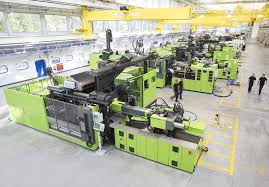
GS1. write basic level notes and observations
GS2. note down observations (if any) related to the process
GS3. read 5S instructions put up across the plant premises
GS4. effectively communicate information to team members inform employees in the plant and concerned functions about 5S
GS5. question the process head in order to understand the 5S related issues
GS6. attentively listen with full attention and comprehend the information given by the speaker during 5S training programs
GS7. use common sense and make judgments during day to day basis
GS8. use reasoning skills to identify and resolve basic problems using 5S
GS9. persuade co team members to follow 5 S
GS10. ensure that the co team members understand the importance of using 5 S tool
GS11. use innovative skills to perform and manage 5 S activities at the work desk and the shop floor
GS12. exhibit inquisitive behaviour to seek feedback and question on the existing set patterns of work
GS13. do what is right, not what is a popular practices
GS14. follow shop floor rules& regulations and avoid deviations; make 5S an integral way of life
GS15. ensure self-cleanliness on a daily basis
GS16. demonstrate the will to keep the work area in a clean and orderly manner
Cleaning and Lubricating the extrusion machinery and the dies:
Elements and Performance Criteria
Clean and Lubricate the Extrusion machinery and the Dies
To be competent, the user/individual on the job must be able to:
PC1.. clearly understanding the does and donts of the manufacturing process as defined in sops/ work instructions or defined by supervisors
PC2.. inspect the extrusion machinery and dies after moulding operations for left over plastic or other impurities or any clogging
PC3.. load the machinery and dies into cleaning tank with chemicals or manually spray the cleaning agents like caustic solution etc. to ensure that the waste plastic material which has remained in the machine after completion of operations is removed and the machine does not clog
PC4.. lubricate the machinery and dies with oil/ grease in order to prepare it for the next cycle of moulding operations
PC5.. in case of automatic cleaning, adjustable cleaning times are preset and dies are left to be cleaned and lubricated automatically
PC6.. examine machinery and dies to ensure they are clean, smooth, and coated as per the specification/ visual sample to be used for next set of operations
Knowledge and Understanding (KU)
The individual on the job needs to know and understand:
KU1. relevant standards and procedures followed in the company
KU2. different types of products manufactured by the company
KU3. functional processes like Procurement, Store management, inventory management, quality management and key contact points for query resolution
KU4. quality norms prescribed by the organization for moulding jobs
KU5. latest cleaning and lubricating agents and chemicals
KU6. different types of moulding processes and associated equipment
KU7. different parameters pertinent to cleaning process like preset time, cycle time etc.
KU8. working of cleaning tools and apparatus
KU9. different chemicals used in the cleaning process of extrusion machines and dies
KU10. safety precautions to be taken for all types of cleaning activities especially while handling hot , caustic solutions etc.
Generic Skills (GS)
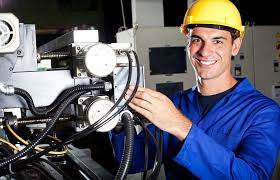
User/individual on the job needs to know how to:
GS1. write drawings to internal customers on the requirement of cleaning and lubricating agents, etc.
GS2. note measurements, equipment panel readings for various process parameters in the required reporting formats
GS3. read equipment manuals and process documents to understand the equipment and processes better
GS4. read instructions (e.g. safety instructions) with symbols while using the equipment in the plant area
GS5. read internal drawings sent by internal customers ( other functions within the organization)
GS6. discuss task lists, schedules, and work-loads with co-workers
GS7. question internal customers/ Moulding shop supervisor appropriately in order to understand the nature of the problem and make a diagnosis
GS8. plan and organize the work order and jobs received from the internal customers
GS9. plan and organize the design documents received from internal customers
GS10. organize all process/ equipment manuals so that sorting out information is without much time delay.
GS11. organize apparatus etc. in an orderly manner at designated areas
GS12. understand the requirement of different types of cleaning and lubricating agents for different types of dies
GS13. finalize the optimum levels of physical parameters so that the job output meets the prescribed job standards, visual samples
GS14. think through the problem, evaluate the possible solution and suggest the best possible solution to the operator
GS15. identify immediate or temporary solutions to resolve delay

Support the operator in moulding related operations:
Elements and Performance Criteria
Feed the plastic granules in the hopper
To be competent, the user/individual on the job must be able to:
PC1.. use weighing machines to measure the quantity of granules and ensure that the correct quantity of granules are put in the hopper
PC2.. perform preheating of plastic granules to improve their tensile strength
PC3.. ensure that the plastic granules are mixed with additives (if any) before being fed into the hopper
PC4.. check that the apparatus is being cleaned before starting the moulding operations
PC5.. feed the plastic granules into the hopper as per operators instructions
Support the operator in conducting the actual moulding process
To be competent, the user/individual on the job must be able to:
PC6.. unload the moulding from die post moulding operations
PC7.. remove the output from the machine once the cycle is complete using proper clamps and other handling tools to carefully pick the product from the machine area
PC8.. in case the output has to be separately cooled, ensure that the helper cools it using the cooling process as mentioned in the work instructions/ sops
PC9.. clean the plastic molding to remove runners/ gates or extra materials through degating and deflashing processes
PC10.. stamp the moulding with the identifying information (wherever required) and send the same for further processing
Knowledge and Understanding (KU)
The individual on the job needs to know and understand:
KU1. relevant standards and procedures followed in the company
KU2. different types of products manufactured by the company
KU3. functional processes like Procurement, Store management, inventory management, quality management and key contact points for query resolution
KU4. quality norms prescribed by the organization for moulding jobs
KU5. reading panels, meters, indicators etc. to monitor the process
KU6. different types of moulding processes, associated equipment like dies, screw/ reciprocating screw/ plunger, heaters etc. and their working
KU7. different parameters pertinent to moulding process like heater temperature, hydraulic pressure/ air pressure/ vacuum pressure, rotating speed of the screw, operating current and voltage, injection time, refilling time etc. and the impact of these parameters on the process
KU8. various types of plastics like thermoplastics/ thermosetting plastics and their properties
KU9. various types of coolants like water etc. and their properties
KU10. moulding defects and how they are generated, how they can be prevented, different consumables used in the melt shop
KU11. extruder operation, melting process, and safety process of handling hot liquid plastic and control
KU12. measuring instruments like vernier callipers, micrometer and other
KU13. geometry and dimensions
KU14. sketches and engineering drawings
KU15. safety precautions to be taken for all types of moulding activities
Generic Skills (GS)
User/individual on the job needs to know how to:
GS1. document, interpret information from the sketches and engineering drawings
GS2. write log book in terms of output quantity, set up parameters, machine setting parameters and loss details etc.
GS3. note measurements, equipment panel readings for various process parameters in the required reporting formats
GS4. read and interpret engineering drawing and sketches
GS5. read equipment manuals and process documents to understand the equipment and processes better
GS6. read safety instructions especially symbols while use the equipment in the plant area
GS7. discuss task lists, schedules, and work-loads with co-workers
GS8. question internal customers/ Moulding shop supervisor in order to understand the nature of the problem and make a diagnosis
GS9. organize all process/ equipment manuals so that sorting out information is fast
GS10. organize apparatus etc. in an orderly manner at proper designated areas
GS11. visualize the final job product after understanding the given drawing/ sketches
GS12. think through the problem, evaluate the possible solution and suggest the best possible solution to the problem
Finish and deposit finished goods in the designated area:
Elements and Performance Criteria
Cut the moulding
To be competent, the user/individual on the job must be able to:
PC1.. understand the set parameters for dimensions of each of the output
PC2.. cut the moulding as per the desired specifications within the desired timelines
PC3.. keep a count of number of output pieces produced after cutting
Removing the finished goods from the moulding block
To be competent, the user/individual on the job must be able to:
PC4.. inspect the goods for scratches, flashes, marks at the time of removal from moulding block
PC5.. hold the finished goods with necessary equipment like clamps, cranes, hoist etc. for unloading from the moulding block
PC6.. safely lift the finished goods and move them to a designated area to prevent any damage to the finished goods
PC7.. in case the plastic moulding are to be moved forward in the assembly line, ensure that the right hangers are used for transportation of finished goods in a safe manner
Storing the finished goods in the designated area
To be competent, the user/individual on the job must be able to:
PC8.. tag the finished goods with job number, piece number and other markings for identification
PC9.. arrange the goods as per the batch number, piece number etc. into designated packing boxes
PC10.. in case of assembly line, transport the finished goods to the next assembly line process
Knowledge and Understanding (KU)
The individual on the job needs to know and understand:
KU1. relevant standards and procedures followed in the company for Finished Goods storage
KU2. different types of products manufactured by the company
KU3. functional processes like Procurement, Store management, inventory management, quality management and key contact points for query resolution
KU4. usage of clamps, cranes, hoists for lifting work pieces
KU5. tagging of the finished goods as per batch codes, material/ part codes, piece numbers etc.
KU6. arranging of the tagged goods in the finished goods storage area
KU7. safety precautions to be taken for material movement
Generic Skills (GS)
User/individual on the job needs to know how to:
GS1. write drawings to internal customers on the requirement of moulding apparatus etc.
GS2. note batch codes, material codes, piece number in the prescribed formats and records for the same
GS3. read equipment manuals and process documents to understand the equipment and processes better
GS4. read instructions especially safety instructions especially for using material handling equipment
GS5. read internal information drawings sent by internal customers ( other functions within the organization)
GS6. discuss task lists, schedules, and work-loads with co-workers
GS7. question internal customers/ Moulding shop supervisor appropriately in order to understand the nature of the problem and make a diagnosis
GS8. plan and organize the work order and jobs received from the internal customers
GS9. plan and organize the finished Goods as per the batch/ product number in the designated area
Assessment Guidelines:
- Criteria for assessment for each Qualification Pack will be created by the Sector Skill Council. Each Element/ Performance Criteria (PC) will be assigned marks proportional to its importance in NOS. SSC will also lay down proportion of marks for Theory and Skills Practical for each Element/ PC.
- The assessment for the theory part will be based on knowledge bank of questions created by the SSC.
- Assessment will be conducted for all compulsory NOS, and where applicable, on the selected elective/option NOS/set of NOS.
- Individual assessment agencies will create unique question papers for theory part for each candidate at each examination/training center (as per assessment criteria below).
- Individual assessment agencies will create unique evaluations for skill practical for every student at each examination/ training center based on these criteria.
- To pass the Qualification Pack assessment, every trainee should score the Recommended Pass % aggregate for the QP.
- In case of unsuccessful completion, the trainee may seek reassessment on the Qualification Pack.






